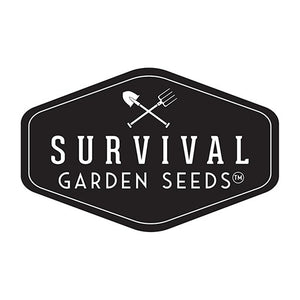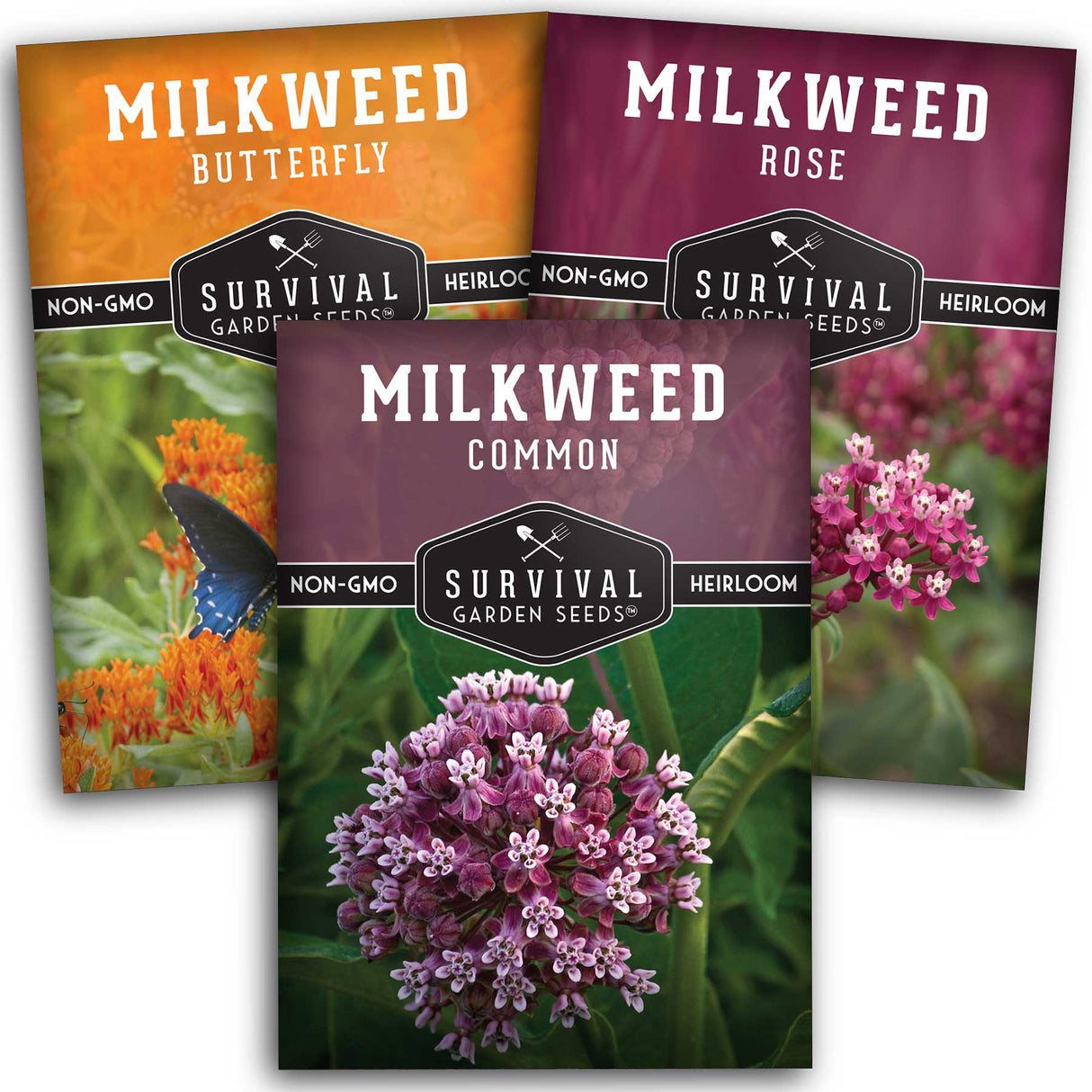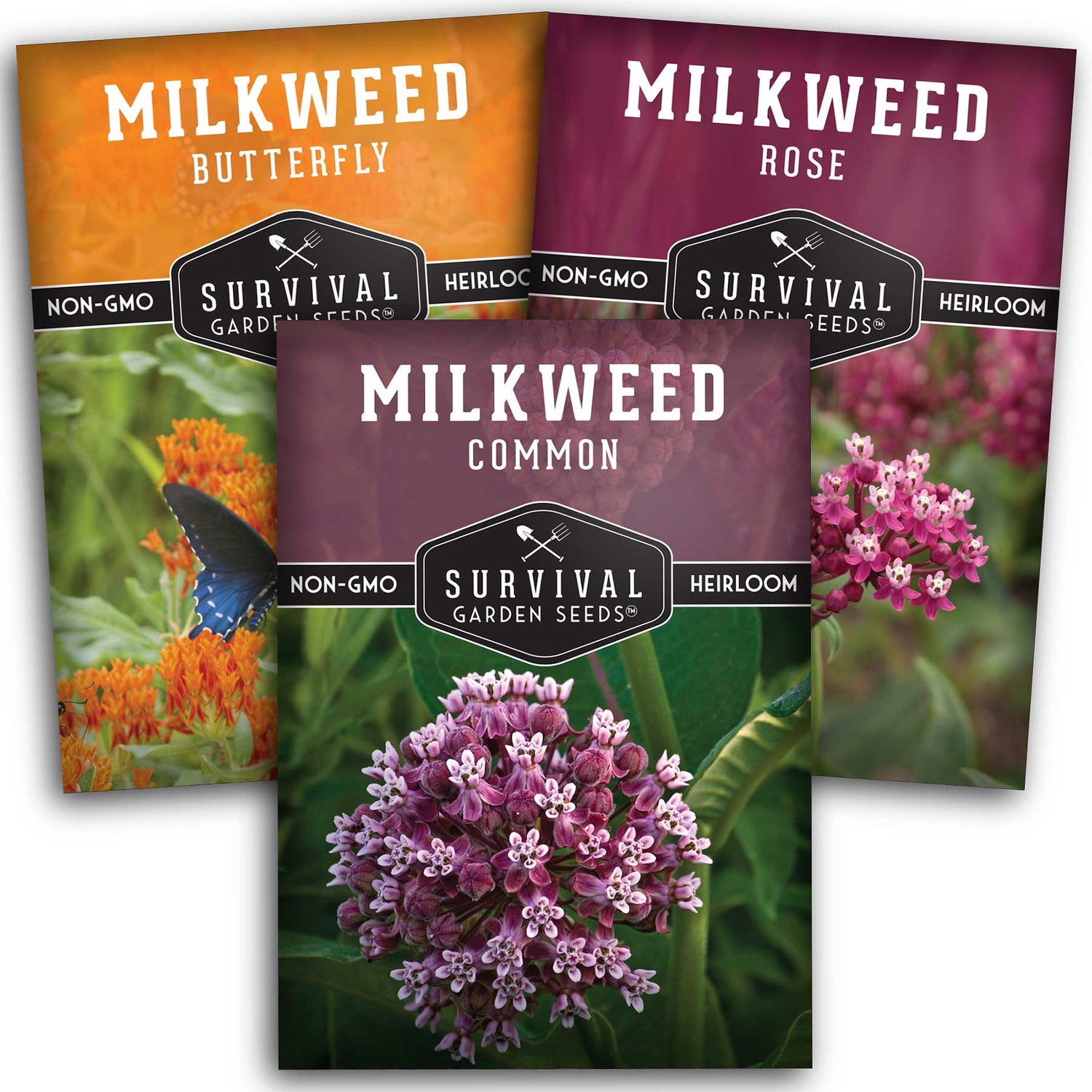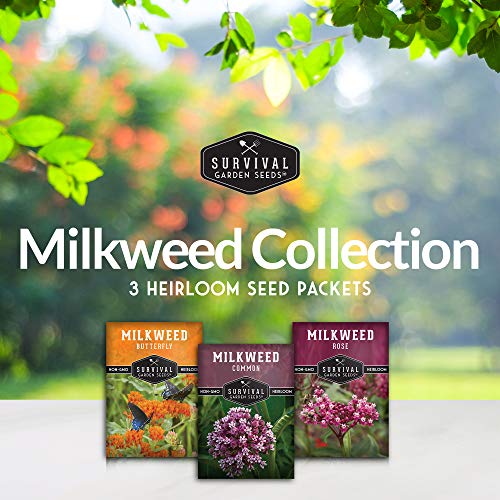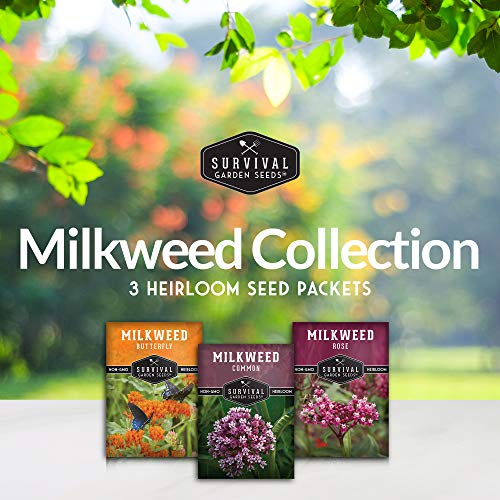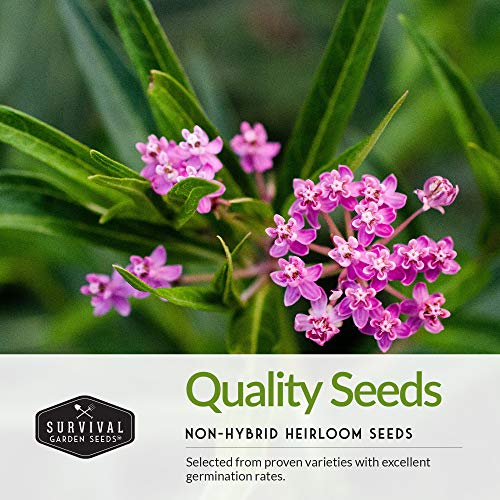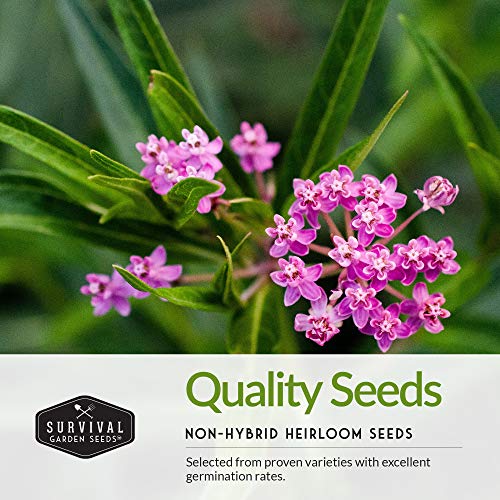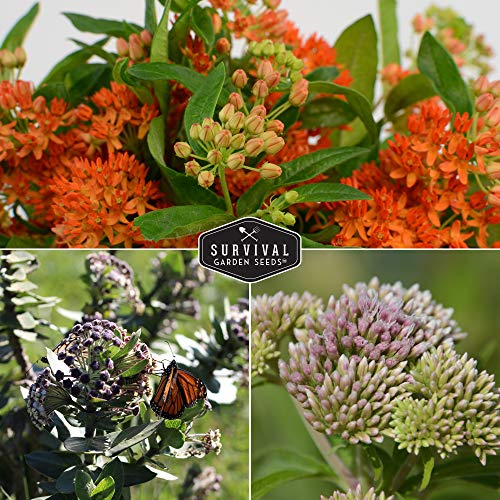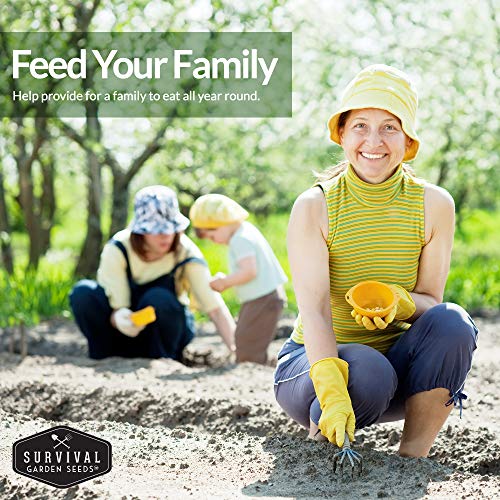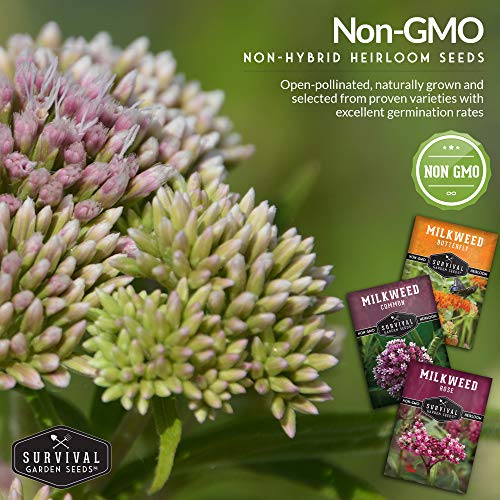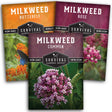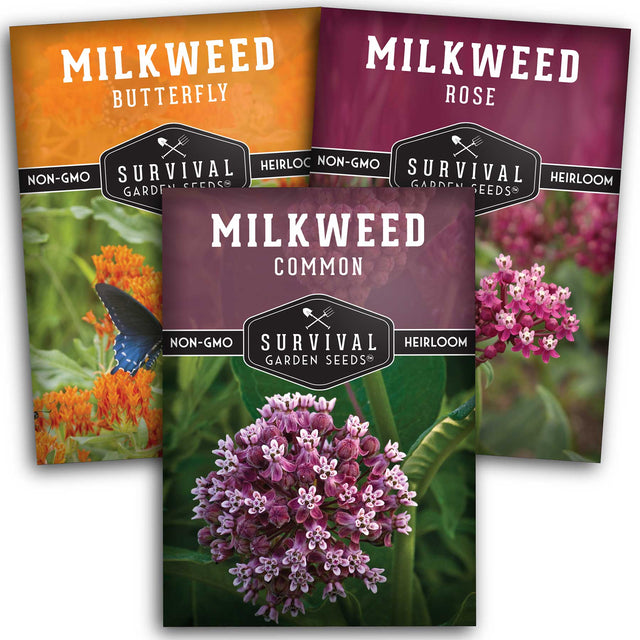Milkweed Seed Collection - 3 Native Varieties of Milkweed
Milkweed Seed Collection - 3 Native Varieties of Milkweed is backordered and will ship as soon as it is back in stock.
Couldn't load pickup availability
- Three Valuable Milkweeds - Beautiful milkweed is an important North American flower that has lost a lot of habitat recently. Do your part to improve your local ecosystems by planting this mix of Common Milkweed, Butterfly Milkweed, and Rose Milkweed.
- Support Monarch Butterflies - These gorgeous orange and black butterflies are entirely dependent on milkweed as a nursery plant for their eggs and the caterpillar and chyrsalis stages of life. Milkweed is the only food a monarch caterpillar will eat, so milkweed is a foundational plant for the survival of this keystone species.
- Cold Stratify for Better Germination - For best results, recreate winter conditions to prime the seeds for planting. For indoor seed starting, sprinkle seeds into a damp paper towel, roll up, and store in the refrigerator for 2-3 weeks, then sow as usual. Stratification encourages seeds to sprout, giving you more young seedlings to become healthy plants.
Butterfly Milkweed is a bushy perennial about 12-18" tall with orange flowers. It is an essential plant for monarch butterflies, providing both food and larval habitat. Multiple plantings are best for attracting butterflies.
Common Milkweed is a perennial herb that grows 24-40” tall. It has broad leaves and clusters of pink star-shaped flowers. The monarch butterfly relies on this plant as a nursery for its eggs and caterpillars.
Rose Milkweed, also know as Swamp Milkweed, is a perennial herb that grows 24-40” tall. It has smooth narrow leaves and clusters of dusty rose, star-shaped flowers. The monarch butterfly and other pollinators rely on this flower.
Heirloom Garden Seeds
All of our seeds are open-pollinated, non-GMO, heirloom varieties with tested germination rates
Payment & Security
Payment methods
Your payment information is processed securely. We do not store credit card details nor have access to your credit card information.
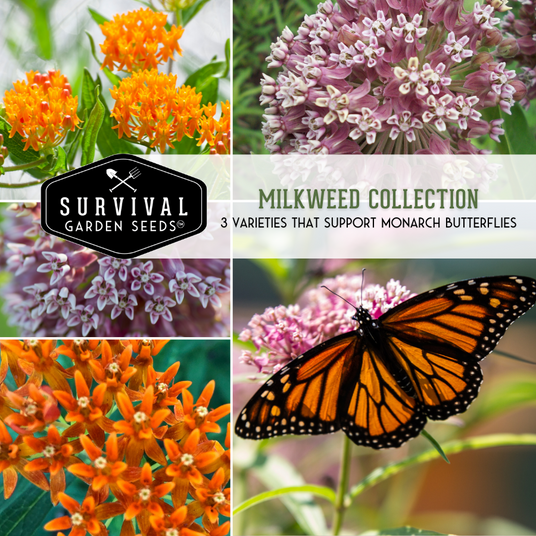
Support Monarch Butterflies
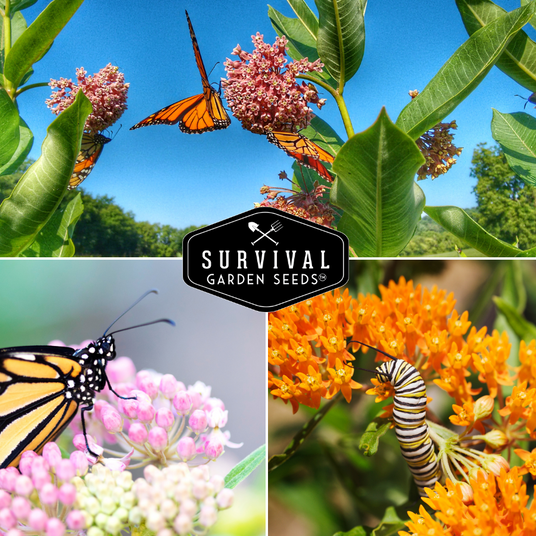
Attract Butterflies and Other Helpful Pollinators
Why Choose Survival Garden Seeds
At Survival Garden Seeds, we believe in preparing today for tomorrow’s peace of mind. That’s why we offer only heirloom, non-GMO, and untreated seeds you can trust to nourish your family and support a sustainable lifestyle. As a family-owned American company, we’re committed to providing seeds that grow strong and true—helping you cultivate health, resilience, and beauty in your garden.
Frequently Asked Questions
What are heirloom seeds?
What are heirloom seeds?
Heirloom seeds are the types of seeds your grandparents grew. These varieties have been passed down from generation to generation. They’re old reliable open-pollinated varieties that aren’t typically grown commercially. Instead, they have a rich history that predates modern breeding techniques.
You can learn more about open-pollinated, heirloom, and non-GMO seeds in our Survival Garden Training blog.
Where are Survival Garden Seeds sourced?
Where are Survival Garden Seeds sourced?
The majority of our seeds are sourced in the United States, with a few exceptions when the seed is difficult to source domestically. Whenever we do have to source outside of the US, we ensure our seeds are safe to grow, non-GMO varieties that meet our standards for germination and reliability.
Are your seeds treated?
Are your seeds treated?
No, we do not pre-treat our farmer seeds. All of our garden seeds for sale are untreated, open-pollinated, non-GMO, and heirloom varieties. They are kept in temperature-controlled cooler storage until they are packed and shipped to keep them pest and disease-free.
In what zones can I grow your seeds?
In what zones can I grow your seeds?
The seeds in our collections are specifically chosen from varieties that can be successfully grown from Zone 3 to Zone 10 USDA Hardiness Zones. However, individual varieties have specific needs to thrive in different environments. Each seed pack has optimal temperatures for germination and instructions on seed starting. Consult local frost dates to plan your garden and get the most out of your seeds.
What is the shelf life of these gardening seeds?
What is the shelf life of these gardening seeds?
Our seeds will generally last for 3-10 years if they are appropriately stored in a cool, dry place. However, we encourage you to grow your survival seeds within a year or two of purchase. This yields the best germination rates possible and also gives you more experience growing survival food now. At the end of the growing season, follow the instructions on the back of each packet for saving seeds for future gardens. These new seeds for survival will be more adapted to thrive in the growing conditions where you are.
